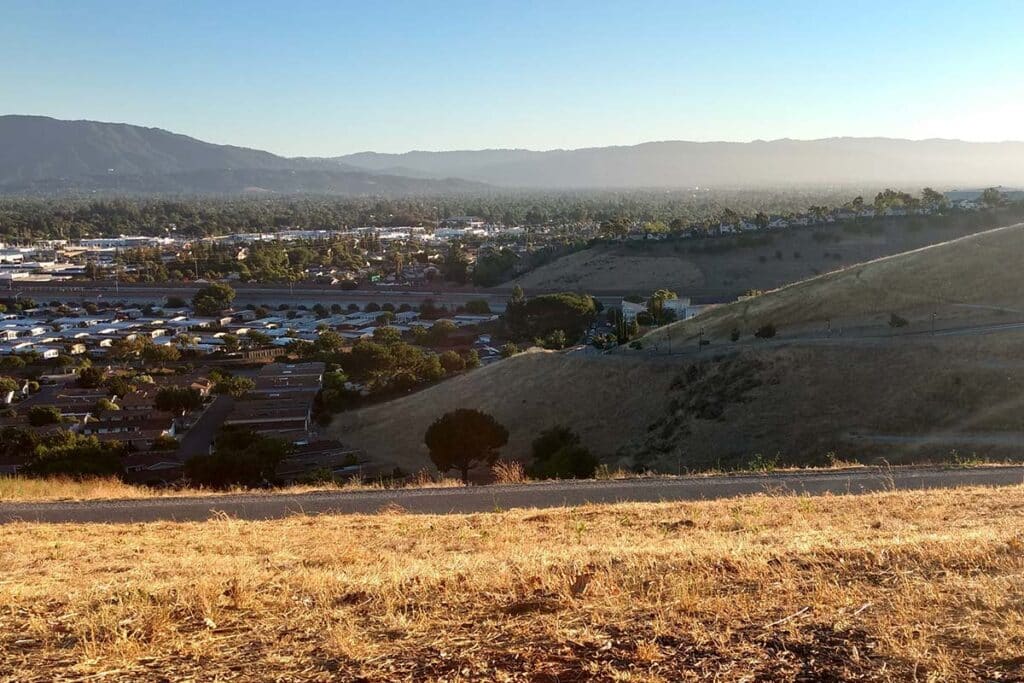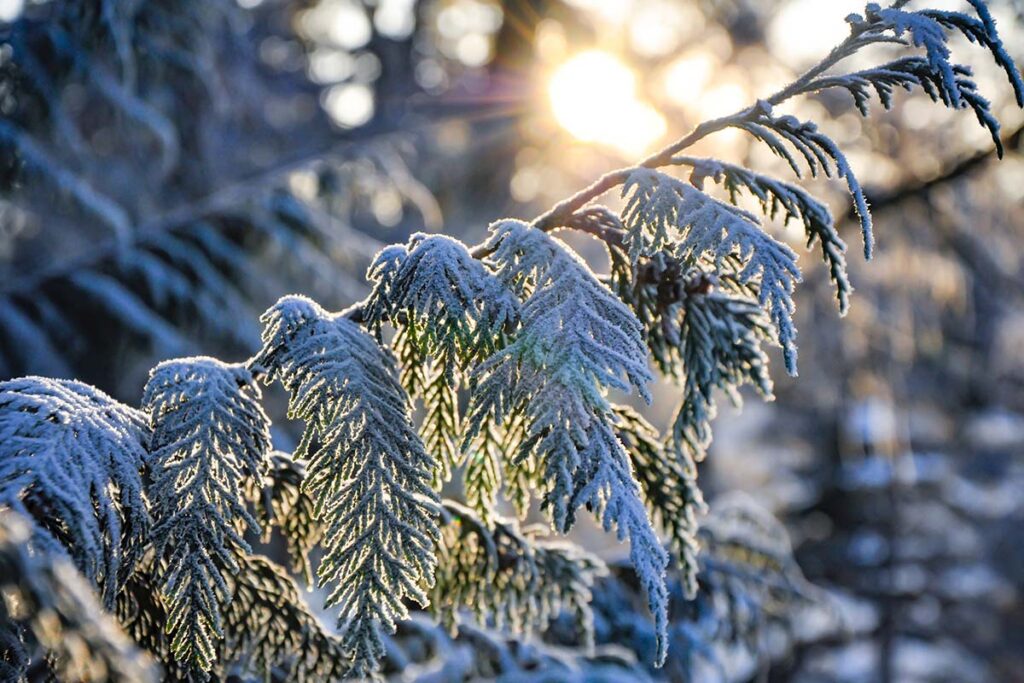San Jose, California, has lots of beaches to enjoy, hiking trails to trek, and festivals to check out. Thus, it isn’t surprising to know that it’s one of the most recommended when you look for a place to visit, move to, or spend your retirement years. But, if you’re very particular about an area’s climate or weather, it’s common to wonder whether snow in San Jose is typical or if it even snows in the city.
So, does it snow in San Jose, California? Yes, it does snow in San Jose, California, but it isn’t common, and you won’t expect regular snowfall. In fact, the gap between the times the city experienced snow is very wide, and the snow often only occurs in the mountains or high-altitude areas.
Knowing whether there’s snow in San Jose isn’t enough. It’s also best to learn about the times there was snowfall in San Jose. Similarly, seeking the answer to “When did it last snow in San Jose?” and understanding its climate or weather will help you decide the best time to visit the city or if it’s worth moving to the area for good.

The Weather or Climate in San Jose, California
Ranked fifth in the 2022-2023 list of the Best Places to Live for the Weather (realestate.usnews.com), San Jose boasts a Mediterranean-type climate. It has contrasting dry and wet seasons, wherein you’ll usually expect hot or warm, dry, long summers and cold, mild, partly cloudy or rainy, short winters.
Here are some quick facts about San Jose’s weather or climate based on current data before we discuss it in more detail:
- Average Sunny Days: 257 per year
- Average Cloudy Days: 108 per year
- Average Annual Precipitation: 410 mm (16.1 inches)
- Average Annual Temperature Range: 43°F (6.11°C) to 82°F (27.77 °C)
- Average Annual Wind Speed: 5mph to 9mph (8kph to 15kph)
- Average Annual Humidity: 50% to 52%
Sunshine
With an average number of sunny days higher than the entire USA’s average, the current annual average amount of sun hours in San Jose is 3,072. From April to July, the city has more than 300 sun hours. Thus, these months are the perfect time to visit the beaches, bring your portable beach umbrella (view on Amazon), and bask under the sun.
In terms of daylight, 2021 records show that the shortest day was on December 21, which lasted for nine hours and 35 minutes. Meanwhile, the longest day recorded was in June, with daylight lasting 14 hours and 44 minutes.
Cloudiness
With its topography, San Jose, CA, experiences more than a hundred days of cloudiness in a year.
Scientifically speaking, the valley and deserts begin to heat up while the ocean remains relatively cool, resulting in a temperature inversion. This occurrence leads to pressure gradient creation that develops a pushing mechanism. This mechanism sends the clouds inland during the night, which will stay overcast throughout the morning.
Therefore, even during the summer season, residents experience low clouds in most parts of the evening. However, roads remain visible since these clouds aren’t too low or at eye level when driving. At times, especially during weak marine layer moments, there are no or incomplete, random stratus clouds or fogs.
Precipitation
Precipitation refers to at least 0.0039mm (0.01 inches) of either or a combination of any of the following:
- Hail: Ever experienced showers that produce iced or frozen rain? This phenomenon is called hail or hailstorm, resulting from the failure of the collected rain in cumulonimbus clouds to fall.
- Sleet: This is often mistaken as snow or hail because it also creates ice pellets and is often accompanied by snow or rain. Sleet results from partially melted snowflakes that fall through a shallow warm air layer.
- Snow: Snow is also ice crystals, but they’re softer than hail and sleet.
- Rain: This form of precipitation is, of course, condensed moisture that falls into visible drops.
At times, data collectors separate data for rainfall, sleet, hail, and snowfall in San Jose. They even provide a record of days or months when the city experienced a combination of the four.
With that in mind, San Jose, California’s overall precipitation is quite scarce. It experiences precipitation around 63 days a year, ranging from zero to 80mm or 3.1 inches or an average of 410 mm or 16.1 inches yearly.
Wet Season
Generally, the city’s wet season is from November to the second week of April, lasting around 5.2 months. That said, February is its wettest month, with precipitation lasting up to seven days and a minimum precipitation measurement of at least 1.016 mm or 0.04 inches.
In terms of the most common type of precipitation it experiences throughout the year, it’s rain. At very rare moments, expect rainfall during the dry months of June, July, and August, but only averaging 5.08 mm or 0.20 inches. This occurrence is due to the early or late-season subtropical moisture southerly surges or storm fronts.
Meanwhile, residents experience infrequent rainfall during the early spring and fall seasons. It can range from light showers to heavy rain.
During the winter, a storm is uncommon, while the city experiences occasional cold fronts that can result in rain or rare thunderstorms. These thunderstorms usually result in heavy rainfall and, at times, small hail. Lastly, snowfall in San Jose is extremely rare and only at trace amounts or generally less than 25.4mm (one inch).
Temperature
In terms of temperature, the hottest during mid-summertime typically ranges from 80°F to 85°F (26.67°C to 29.44°C). The hottest month recorded as of writing is August, while the most comfortable months are May, June, and September. In contrast, the coldest is from 55°F to 60°F (12.78°C to 15.56°C), which is actually the usual mid-winter high temperature (or day) range.
At its coldest or during the night, the average mid-winter temperature depends on the area. That said, the flat areas experience mild winter seasons with temperatures between 40°F and 45°F (4.4°C to 7.22°C). Those living in the valleys experience a cold temperature ranging from 35°F to 40°F (1.67°C to 4.4°C).
Average water temperature-wise, there is also a noticeable seasonal variation. The water surface during the warmer months, between August and October, usually reaches a maximum of 57°F or about 14°C. However, expect the water to be one degree Fahrenheit warmer during the warmest month in San Jose, which is September.
Meanwhile, the water is a little cooler from December to June, averaging at less than 54°F or 12.2°C. The month wherein you’ll expect the bodies of water to be the coolest is April, averaging at less than 53°F or 11.66°C.
Based on these average water temperature data, you’ll find that swimming at any time of the year is still comfortable. Of course, it will depend on the temperature you’re most comfortable with or can tolerate, whether warm or cold. Likewise, you must consider rain, storms, and other weather disturbances before planning your trip.
Windiness
During the dry season, San Jose residents experience calm winds from around an hour or two after sunset to midday. On the contrary, strong southeast winds are commonly experienced during the wet season.
That said, an average wind speed of more than seven mph typically lasts more than four months, from the last week of March to the third week of August. Overall, June is usually the windiest month, while October is the calmest.
Humidity
Based on relative humidity levels ranging from 60% to 72%, San Jose has mild humidity, so some still find living in the city comfortable. During the most humid months, though, humidity can reach up to 80%.
With this kind of humidity, plus the type of rainfall and winds the city commonly experiences, it’s best to add at least one packable, lightweight, all-season jacket (view on Amazon) to your closet.
Snow in San Jose, California

Now you clearly understand the typical annual weather or climate in San Jose, CA. Thus, let’s get to discussing one of the natural occurrences that can be a reason for some to enjoy the city but can also prevent others from moving to or visiting the place: snow!
When Did San Jose Last Get Snow?
On the last week of December 2021, residents woke up to snow accumulating on Mount Hamilton, Mount Diablo, and Mount St. Helena. The hills surrounding these mountains also have snow accumulations.
Even more surprising, it isn’t the typical light snowfall in Mt. Hamilton since the measurable snow was around 2,000 to 2,500 feet (sfgate.com). The snow also fell down the low-lying areas to as low as 1,000 feet below the city’s highest peaks.
Weather experts said that this snowfall in San Jose was due to Canada’s cold weather system that has been pushed towards and across the Bay Area.
This rare event brought out the kid in most of the adult population and excited the younger generation that saw snow for the first time. Some also enjoyed common activities like sledding, snowball fights, and creating snow angels.
The History of Snowfall in San Jose
Answering, “When did it last snow in San Jose?” led us to the exciting fact that the residents experienced snow just recently. But for us to know how rare this event this, here’s a rundown of the specific years recorded when there was significant snow in San Jose, California:
1950
One of the highest snowfalls recorded in Mount Hamilton was over 853mm or 33.60 inches in January 1950.
1976
One of the most famous snowfalls in San Jose was on the fifth of February 1976 because snow lingered on the ground instead of just snow dust. Residents experienced 13mm or 0.5 inches of snow, and most of them had up to 76.2mm (3 inches) of snow collecting on top of their rooftops and vehicles.
2019
In February 2019, Mount Hamilton experienced more than 900mm of snow, or around 38.1 inches, breaking its 70-year record in terms of monthly snowfall.
Does It Snow in San Jose, California – In Conclusion
Snow in the mountains and, at times, hills surrounding San Jose, California, isn’t an uncommon scenario. However, snow on the ground is extremely rare because it melts before reaching the ground. When it does, it’s only snow dust falling from the elevated regions.
As extremely rare as it is, there are only a number of well-documented snow in San Jose, and they’re only usually on Mount Hamilton. So, if moderate to heavy snowfall and harsh winters are among the reasons you want to move, San Jose City, California, is one of the best places to consider. Retiring in the area is also great for the adventurous ones.
But, of course, like when searching for any retirement community, it’s always ideal to consider the cost of living in California. It’s also recommended that you pack your travel bags (view on Amazon) and visit the city to experience it on your own before deciding to move.
